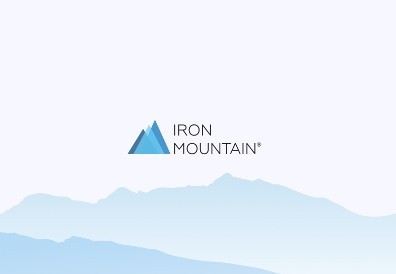Rim playing catch-up: four steps for modernizing records retention
Much like a cartoon character whose nemesis keeps pulling the road forward as he runs, you may feel like you'll never get ahead with your records...

Much like a cartoon character whose nemesis keeps pulling the road forward as he runs, you may feel like you'll never get ahead with your records retention schedule.
Much like a cartoon character whose nemesis keeps pulling the road forward as he runs, you may feel like you'll never get ahead with your records retention schedule: No matter how fast you move, changing regulations on the horizon,along with a reliance on manual processes, keep you in a perpetual state of catch-up.
Though at times it may seem like a losing race, that's just an illusion. By taking advantage of technology advances and legal services, and automating where you can, you'll modernize the way you keep policy current throughout the enterprise.
Most companies have taken steps to assure a legally credible records retention schedule is central to their records information management(RIM) initiatives: A 2014 Cohasset study reveals that 92 percent of RIM professionals have retention schedules in place.
However, these schedules are falling short: In that same Cohasset study,88 percent say that their schedules need improvements.
Records Retention Has Its Challenges
Just like the path of that beleaguered cartoon character, the road to retention is fraught with obstacles (though hopefully not anvils falling on your head). These may include:
- Information overload. The sheer volume of information that your company works with across a distributed geography is growing every day, along with the number and types of information sources.
- Rules, rules, rules. An ever-shifting set of rules and regulations leads to more complicated requirements.
- Internal hiccups. Applying retention schedules to the right systems—the records management enabled ones—is likely still a manual process, one that's characterized by gaps and inconsistencies.
- Communications gaps. Getting changes implemented within a system, then educating your colleagues about them, is an unwieldy, predominantly manual process. Also, it's usually the responsibility of a person, team or department within a company.
- Scaling retention globally involves accommodating a multitude of rules and regulations in each country or geography you conduct business.
Four Steps to Retention Modernization
When an industry embraces automation—whether it's the automaker's or brewery's factory floor, or even taxi dispatching—it's been a game changer,prompting product advancements, cost savings, efficiencies and greater productivity.
Likewise, your retention program can enjoy similar benefits (and the peace of mind that comes with knowing you're in compliance) by following these four steps toward modernization.
Step #1: Monitor regulations constantly.
As rules change,so do retention requirements. You need a method for continuously updating retention guidelines to reflect changes in laws, so your organization can maintain compliance.
Step #2: Apply your retention schedule to the appropriate systems.
Share, in a systematic way, your records retention schedule with the records management enabled systems in your content infrastructure. To get past your manual processes, consider a cloud-based alternative: Use the cloud as a repository for your retention schedule and guidelines. Then, distribute them to the appropriate content systems via an open API interface.
Step #3: Communicate and track changes constantly.
Refreshing your retention requirements once is not enough: You'll need to document and track changes on an ongoing basis so you can heed an auditor's call. Otherwise, you're increasing your non-compliance risks. Get all your records management-enabled systems working in concert: By doing this, you can guarantee that your retention policy is consistently applied to information, regardless of its format or location.
Step #4: Scale your retention program globally.
You know how difficult it is to keep up with federal and state regulations. So you can imagine the challenge of meeting and incorporating international retention requirements. Centralize change management and version control by initiating and maintaining collaborative discussion threads among all of your information stakeholders. What's more, make sure you've built out the infrastructure—in terms of both technical and human resources—to support your retention and RIM initiatives
RIM and IG: Eight Essential Steps for Creating Sound Policies
An organization's information management policies can support everything from improving workflows to protecting records. Follow these eight steps for creating and enforcing strong (but very doable) RIM and IG policies.
Your Bonus Step: Team With a Retention Pro
Modernizing your retention program may require more internal expertise and resources than you currently have on tap. For example, curating the latest legal and regulatory updates is, by itself, a huge ongoing time commitment. By teaming with a partner that's well versed in RIM and well-equipped to police changes in federal and state laws, you'll keep your retention program running in a safer,proactive mode.
So how can these smart changes in your retention program affect your records management marathon? Now, the faster your legs move, the more progress you'll make.
Do you have questions about records and information management? Read additional Knowledge Center stories on this subject, or contact Iron Mountain's Information Management team. You'll be connected with a knowledgeable product and services specialist who can address your specific challenges.
Related resources
View More Resources

